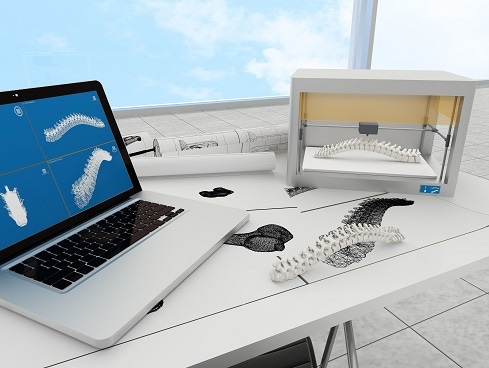Global supply chains are casualties in Putin’s doomed war, too. Economies worldwide are suffering from the blows. A major rethink in supply chain management could make a world of difference.

Even in times of relative peace for certain regions, supply chains can be sorely tested by world events, such as they are now by the pandemic and its ongoing effects. But nothing creates more serious supply chain interruptions than war. Business as usual will not overcome such dire problems. What can IT do now to help reduce human suffering, counter supply shortages, and increase their company’s resilience?
Among mounting supply chain obstacles stemming from Russia’s unprovoked attack on Ukraine are financial sanctions, closed air spaces, trapped shipments, and wartime aggressions. Both sides in this conflict aim to disrupt the other side’s logistics. Earlier supply chain management and company resiliency plans are rendered impotent in the face of so many risks. They’re simply no match for willful destruction and the intense reverberations of war.
In short, this situation calls for a massive rethink on the structure of supply chains and their ecosystems rather than a tweaking of inventory and supply management technologies.
It begins with an abrupt farewell to the notion of just-in-time (JIT) supply strategies. Manufacturing process enhancements from Six Sigma to JIT are priceless studies in elegant efficiencies and near flawless production, but these efforts no longer align with the current business reality.
For starters, just scoring enough energy supply to move raw materials and finished goods is an expensive challenge that may soon stall to a standstill. Shipping costs, according to Moody’s Analytics, soared by 300% last year because of the pandemic, largely due to closed borders and ports. The scarcity of new shipping containers added to the costs and remains a problem for the foreseeable future. Now fuel costs are soaring because of the war. But the problems supply chains are encountering do not end there.
Worldwide Inflation, Stagflation, Recession?
Many industries beyond transportation are also seeing skyrocketing costs, not only due to worldwide inflation (and possibly the onset of stagflation and recession) but also because numerous products require refined gas and oil additives in their production. Examples include rubber, preservatives, plastics, and containers. Both the agricultural and medical fields will be severely hampered by shortages of gas- and oil-based products. That’s horrifying considering food and medicine are two industries mankind can’t live without.
And these are just the birthing pains of what’s to come should the unprovoked and brutal Russian war drag on. God help us all if it expands into World War III.
Meanwhile, countries and companies around the globe have to do what they must to survive. Obviously trying to fix or adapt traditional supply chains is only a temporary measure, succeeding only until calamity strikes a mode, a route, a plant, a border, or a city next time.
The solution clearly isn’t to endlessly fix what is clearly broken and will remain repeatedly if not permanently broken. That being the case, what else do we have in the toolbox that we can use to deliver the products the world needs?
Role of 3D Printers
The answer of course is that we have 3D printers. And we do know how to use them to print things.
Already houses are printed and lived in all over the world. Here are examples in the US, in Mexico, and in China. Other buildings are being printed too from office buildings to apartment complexes. A vast variety of products are being printed every day from guns and dentures to shoes and human organs.
But back to our current war-torn supply chain issues. We’ve digitalized much of the world already. How big a leap is it to send digital code to strategically placed printers rather than ship finished goods?
It’s important to note that a fix for supply chains of this nature is not necessarily a simple undertaking. 3D printing has incurred obstacles including:
An inability to cost-productively produce products at scale (in large numbers of units)
A lack of product and industry standards
A lack of legal protections such as product licensing
Unavailability or low-quality printing materials (inks)
Technical issues such as in printing metals
However, at least some of those issues are already being addressed. For one thing, industry and standards organizations are aggressively writing standards and producing product certifications.
For example, ASTM International, a global standard development organization, has numerous technical committees developing AM (aka 3D printing) standards for many industries and supply chain points now. ASTM has also asserted that “3D printers are proving to be useful in hard-to-reach locations, such as military bases, the International Space Station, and more,” which also appears to be in agreement (at least in concept) that 3D printers can be a viable alternative to supply chains when said chains have lost their link to business as usual.
While 3D printing may struggle to scale up to produce large numbers of units, it can certainly take on big jobs like printing a building. Further, Gartner said that 3D printing offers “considerable potential for industries that operate on a massive scale, like the oil and gas (O&G) sector.” Meanwhile more and higher quality printing materials are becoming available. And, manufacturers are finding that 3D printing is faster in limited runs, more flexible than traditional manufacturing and can result in lower production costs.
Using 3D printing to resolve current supply issues may be more a matter of replacing broken links in an existing supply chain rather than trying to replace it outright. Consider that PwC said back in 2016 that “more than two-thirds of US manufacturers already use 3D printing in some way” which likely indicates that the printers are key integrations in manufacturing processes, and not a replacement for them. Similarly, supply chain strategies like delivering raw material or inventory “just in time” to meet production schedules can conceivably be augmented by the addition of strategically placed 3D printers to bolster supply and distribution to overcome obstacles such as those posed by war and pandemics.
Yes, making a hard turn from mostly subtractive manufacturing (the traditional way) toward augmentation with large scale and distributed additive manufacturing (3D printing) will be a tremendous challenge. But we already know we can do that sort of thing. How many hard turns did IT make to keep the world functioning in innovative ways during the pandemic? I know, right?! What we did once, we can do again.
Ask yourself: Should we replace current supply chain models by shipping digital code to strategically placed 3D printers for as many goods as we can?
And to all the makers and tinkerers and creators out there: How would you suggest companies, industries, and even countries try this new supply chain model out?
Keep thinking my friends. Life is what we create it to be.
What to Read Next:
US Regulators Move to Understand Crypto and Explore Guardrails
Digital War Chest: Crypto and Russia’s Invasion of Ukraine
Ukraine Crisis, Rise in Cyberattack Threats Bolster Case for Zero Trust
About the Author(s)
You May Also Like







